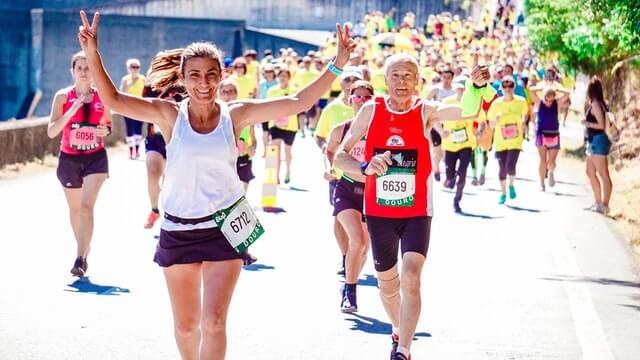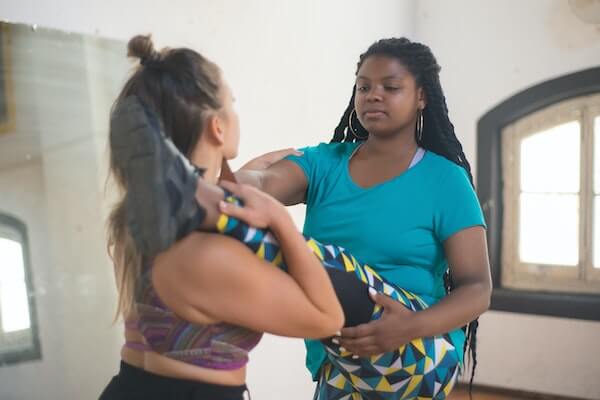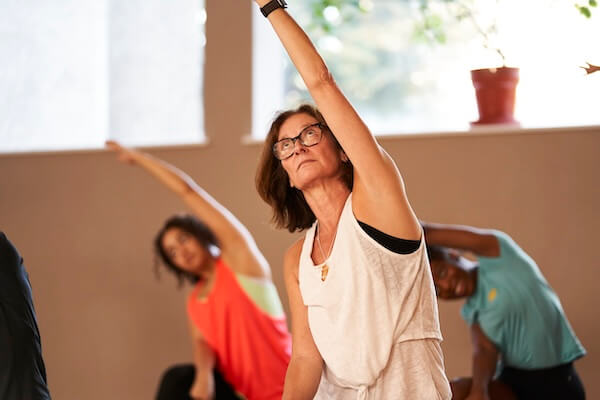
If you are thinking about taking up running or if you have a 5km running event in mind, then the first thing that comes to mind is probably a 5km run. You can start by walking and gradually build your stamina and endurance until you can comfortably finish a 5km run without breaking down in pain.
The following tips will help you prepare for running five kilometers:
Follow a Plan
There are many different training plans available online or through running apps that can help you prepare for your first 5km race. Look for a plan that is specifically designed for beginners and allows for gradual increases in distance and intensity. Couple of plans to try are - Couch to 5k and Nike 5km training plan. There are a few apps on the Play Store and App Store to make following the program easy. For the Nike 5km training plan, try the free Nike Run Club app.
Get comfortable gear
Comfortable gear is essential when preparing for a 5km run. Whether you're a seasoned runner or just starting out, having the right clothes and shoes can make a big difference in your performance and overall enjoyment of the run.
First and foremost, it's important to wear the right shoes. Running shoes should be comfortable, supportive, and designed specifically for the type of running you'll be doing. It's worth investing in a good pair of running shoes, as they'll help to reduce the risk of injury and keep your feet comfortable throughout the run. When trying on shoes, be sure to walk and jog around in them to make sure they feel good on your feet.
In addition to shoes, it's important to wear comfortable, moisture-wicking clothing when running. This will help to keep you cool and dry, and prevent chafing. Avoid wearing cotton, as it tends to hold onto sweat and can become heavy and uncomfortable. Instead, opt for technical fabrics that are designed to wick moisture away from the skin.
It's also a good idea to wear layers when running, especially in cooler weather. This will allow you to adjust your clothing as needed to maintain a comfortable body temperature. Don't forget to wear a hat or headband to help keep the sweat out of your eyes, and consider wearing sunglasses to protect your eyes from the sun.
Finally, be sure to carry any necessary items with you on your run. This may include a phone, keys, water, and snacks. A good running belt or hydration pack can help to keep these items close at hand and prevent them from weighing you down.
Remember to warm up and cool down

A proper warmup
and
cool down are essential components of any training
program, and this is especially true when preparing for a 5km run.
First, let's define what we mean by warmup and cool down. A warmup
is a period of physical activity that prepares your body for
exercise, while a cool down is a period of activity that helps
your body recover after exercise. Both of these activities serve
important functions, and neglecting either one can increase your
risk of injury and impair your performance.
So, why are warmup and cool down important? Let's start with the
warmup. A warmup serves several important functions, including:
-
Increasing your heart rate and blood flow: A warmup helps to gradually increase your heart rate and blood flow, which can help to prepare your body for exercise and reduce the risk of injury.
-
Loosening your muscles: A warmup helps to loosen and warm up your muscles, which can improve your range of motion and reduce muscle stiffness.
-
Improving your mental focus: A warmup can help to improve your mental focus and prepare you mentally for the workout ahead.
In addition to the benefits of warmup, a cool down is also
important for several reasons, including:
-
Reducing muscle stiffness and soreness: A cool down can help to reduce muscle stiffness and soreness, which can make it easier to recover from your workout.
-
Lowering your heart rate and blood pressure: A cool down can help to gradually lower your heart rate and blood pressure, which can help your body recover more quickly after exercise.
-
Improving your mental clarity: A cool down can help to clear your mind and improve your mental clarity after a workout.
You can try YouTube videos for warm up and cool down ideas, or
try an app like the free Nike Training Club App.
Gradually increase your mileage
It's important to gradually increase your mileage over time to
avoid injury and allow your body to adapt to the demands of
running. Start with short runs and gradually increase the distance
over the course of your training.
Incorporate strength training

In addition to running, it's important to incorporate other
types of workouts into your training plan. This can include
strength training, yoga, or cross-training activities such as
swimming or cycling. Strength training, in particular, is
important for runners as it helps improve muscle imbalances and
reduce the risk of injury. Yoga, on the other hand, can help
improve flexibility and reduce stress, both of which are important
for runners. Simple bodyweight exercises like squats, lunges, and
push-ups can be done at home with minimal equipment.
Cross-training activities can provide a welcome change of pace and
allow your body to recover from the demands of running.
Strength training is often overlooked when it comes to training
for a 5km run, but it is an important part of any runner's
training regimen.
First, let's address the question of why strength training is
important for runners. Many runners, particularly those new to the
sport, may think that the key to improving their performance is
simply to run more and faster. While it is true that endurance and
cardiovascular fitness are important factors in running, strength
training can also play a vital role in improving performance and
preventing injuries.
One of the primary benefits of strength training for runners is
that it can help to improve your running economy. Running economy
refers to the amount of energy required to maintain a certain
speed, and a runner with good running economy is able to run
faster and farther using less energy. Strength training can help
to improve running economy by increasing the power and strength of
your muscles, which can help you to generate more force with each
stride and maintain a more efficient running form.
In addition to improving running economy, strength training can
also help to reduce the risk of injuries. Running is a high-impact
sport that can put a lot of strain on your muscles, tendons, and
joints. By building strength in these areas, you can help to
protect yourself from common running injuries such as shin
splints, plantar fasciitis, and stress fractures.
So, how do you go about incorporating strength training into your
training routine for a 5km run? As with any training program, it's
important to start slowly and gradually increase the intensity and
volume of your workouts. Here are a few tips to get you started:
-
Start with two strength training sessions per week, and gradually increase to three or four sessions as you become more comfortable with the exercises.
-
Focus on exercises that target the major muscle groups in your lower body, including your quadriceps, hamstrings, glutes, and calves. These muscles are important for running, and strengthening them can help to improve your performance and reduce the risk of injuries.
-
Incorporate both lower body and upper body exercises into your strength training routine. In addition to targeting the muscles in your legs, it's also important to strengthen your core, arms, and shoulders to maintain good posture and balance while running.
-
Use a combination of free weights, bodyweight exercises, and resistance bands to challenge your muscles and improve your overall strength.
-
Gradually increase the intensity of your strength training workouts by using heavier weights, performing more repetitions, or adding additional sets.
Have a break between runs
Don't run consecutive days. Instead, allow your body to recover. You can still do brisk walks on the day off or strength training. Make sure to include rest days in your schedule and listen to your body. If you feel tired or sore, take an extra day off to allow your body to recover. In addition to rest days, it's also important to incorporate other recovery techniques into your training plan. This can include foam rolling, stretching, or using a recovery tool such as a massage ball or lacrosse ball.
Repeat sessions - if needed
Go at your own pace and listen to your body. If you struggled
through a session, you can repeat it. This will ensure your body
is ready for progressing through to the next step.
Stay hydrated and nourished
Proper hydration and nutrition are key to successful training and performance. Whether you're an experienced runner or just starting out, it's important to fuel your body with the right nutrients to ensure that you have the energy and endurance to complete the run.
Hydration is particularly important when it comes to running. The body needs adequate hydration to function properly, and being even slightly dehydrated can impact your performance. It's important to drink plenty of fluids before, during, and after your run to keep your body hydrated and prevent fatigue. Water is the best choice for hydration, but sports drinks can also be helpful for longer runs or runs in hot weather, as they can help to replace electrolytes that are lost through sweat.
In addition to hydration, it's also important to nourish your body with the right nutrients before and after your run. This means eating a well-balanced diet that includes a variety of whole foods, such as fruits, vegetables, whole grains, and lean proteins.
Before your run, it's a good idea to eat a light meal or snack that is easy to digest and provides some sustained energy. This could be a piece of fruit, a granola bar, or a bowl of oatmeal. Avoid eating heavy, greasy, or sugary foods before running, as they can cause stomach upset and slow you down.
After your run, it's important to refuel your body with the right nutrients to help with recovery and repair. This includes protein to help rebuild muscle tissue and complex carbohydrates to replenish glycogen stores. Good post-run snack options include a protein smoothie, a bowl of quinoa and vegetables, or a turkey and avocado sandwich.
Allow enough time before booking the 5km event
Allow at least 9 to 10 weeks of training before you have your first 5km run. If you can allow a little longer, even better, as you know you won't have to rush and it will give you more time to practice your breathing and pacing.
Stay motivated

Training for a 5km race can be a long and challenging process, so it's important to find ways to stay motivated.
However, staying motivated can be challenging, especially if you're just starting out or if you're feeling unmotivated due to other factors in your life. Here are some tips for staying motivated when preparing for a 5km run:
-
Find a running buddy or group. Having someone to run with can be a great way to stay motivated. You can hold each other accountable, encourage each other, and have someone to talk to during your runs. If you don't have anyone to run with, consider joining a running group or club in your area.
-
Mix up your workouts. Doing the same thing over and over again can get boring, so it's important to mix up your workouts to keep things interesting. This could mean trying different routes, incorporating strength training or cross-training into your routine, or even trying a new running surface.
-
Celebrate your progress. It's important to recognize and celebrate your progress, no matter how small. Whether it's completing your first 5km run, shaving a few minutes off your time, or running a certain distance for the first time, it's important to take a moment to celebrate your achievements.
-
Find a source of inspiration. Whether it's a quote, a song, or a person, finding something that inspires you can be a great source of motivation. Keep this source of inspiration with you during your runs to help keep you motivated when things get tough.
In summary, staying motivated when preparing for a 5km run is essential for achieving your goals and maintaining a consistent training routine. By setting specific, achievable goals, finding a running buddy or group, mixing up your workouts, celebrating your progress, and finding a source of inspiration, you can stay motivated and on track towards achieving your running goals.
By following a training plan and staying consistent with your
training, you will be well-prepared for your first 5km race. Good
luck, and happy running!
Looking for local
5km events? Try our calendar with Melbourne
5km running events and Sydney
5km running events.
Got a tip or story to share
Taking the first step to exercise can be daunting. Do you have a great tip or a story to inspire others? Join the KeepActive Facebook group or tag us on Instagram or Facebook to share your tips or story. There are a lot of people unsure about starting their fitness journey or meeting strangers, seeing stories and photos from other people can inspire others to take their first step.






